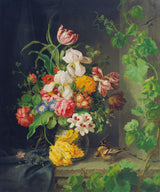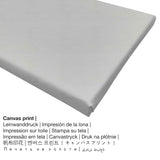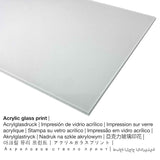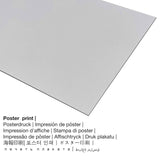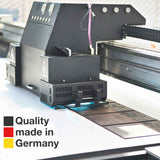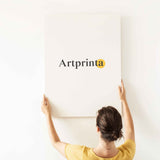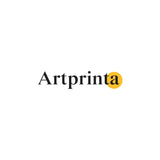Josef Lauer, 1848 - N'agbanyeghị ndụ nwere okooko osisi na vine Spatz - ọmarịcha nka
Ụtụ gụnyere. Mbupu gbakọrọ na ndenye ọpụpụ.
(© Nwebiisinka - Belvedere - www.belvedere.at)
The magnificent flower and fruit bouquets that have arisen in the early 19th century in the imperial city Vienna, can not be described as a Viennese invention. It is rather a question of picking up a run in the Dutch painting of the 17th and 18th centuries in top form image type. The Viennese artist knew many of these works from the collections of the Austrian nobility, the Academy Gallery and the Imperial Picture Gallery. Of these magnificent arrangements finally the thoughtlessness was taken in the selection of flowers and fruits, which took place mostly after color and formal criteria, but rarely reflect reality because many of the united in the painting plant never find each other in reality as they different times bloom. Crucial to this visual and colored "Fireworks" the taste of the buyer, as well as its tendency to decorative was. As the basis for an optimal combination therefore study leaves were used by flowers that were present both in the flower painting school of the Imperial Academy of Fine Arts as well as in the various greenhouses. In conjunction with ornate vases, goblets or small sculptures, behind catch of landscape views or important paintings of the past, these representations evolved eventually imaginative structures that met the needs of the customer for representation. They were regarded as jewels, as an ornament of the salon. The Viennese humor in these paintings is reflected in the rich colors and an almost tactile, sensuous presence of the subject. A remarkable feature of the still lifes by Josef Lauer is also the inclusion of birds and insects in his pictures. [Grabner 2010]
ozi
The piece of art was created by the Austrian artist Josef Lauer. The original had the size: 90 x 74 cm - frame dimensions: 107 x 89 x 5 cm and was painted with oil on canvas. The original artwork is inscribed with the following information: "signed and dated lower left: Jos: Lauer pinx: 1848". Furthermore, the work of art can be viewed in in the Belvedere's art collection, which is one of Europe's most famous museums with three locations that blends the experience of architecture and art in a unique way. We are pleased to reference that this artwork, which belongs to the ngalaba ọha is supplied with courtesy of © Belvedere, Vienna, inventory number: 7917. : nyefee site na Kunsthistorisches Museum, Vienna na 1987. Ọzọkwa, alignment dị na eserese format na a akụkụ ruru nke 1: 1.2, nke pụtara na ogologo bụ 20% mkpụmkpụ karịa obosara. Josef Lauer was a male painter, whose art style was primarily Realism. The European artist was born in 1818 in Vienna, Vienna state, Austria and passed away at the age of 63 in the year 1881 in Vienna.
Ngwaahịa ị nwere ike iburu
Anyị na-enye ihe dị iche iche dị iche iche na nha maka ngwaahịa ọ bụla. Nha na ihe ndị a bụ nhọrọ anyị na-enye gị maka nkeonwe:
- Mbipụta akwụkwọ mmado (akwa akwa akwa): The poster print is a UV printed sheet of canvas paper with a slight finish on the surface. Please keep in mind, that depending on the absolute size of the canvas poster print we add a white margin of something between 2-6 cm around the painting, which facilitates the framing.
- Aluminom dibond (ọkpụkpụ ọla): Aluminium Dibond prints are prints on metal with a true depth. A direct Aluminium Dibond Print is your perfect start to fine reproductions produced with aluminum. The white and bright parts of the work of art shimmer with a silk gloss but without any glow. This direct UV print on aluminium is the most popular entry-level product and is a truly stylish way to showcase fine art prints, as it puts the viewer’s attention on the artwork.
- Mbipụta kwaaji: The printed canvas material mounted on a wooden frame. A canvas print has the advantage of being low in weight. That means, it is easy and straightforward to hang the Canvas print without the help of any wall-mounts. A canvas print is suitable for all kinds of walls.
- Mbipụta enyo acrylic: The print on acrylic glass, which is sometimes described as a print on plexiglass, changes your favorite original into beautiful home décor. The work of art is manufactured with the help of modern UV print machines. This creates the image effect of vivid and sharp colors. The major advantage of an acrylic glass print is that contrasts plus artwork details will be recognizeable because of the precise gradation. The acrylic glass protects your selected fine art print against sunlight and external influences for decades.
Banyere onye na-ese ihe
| Aha onye nka: | Josef Lauer |
| Aha ndị ọzọ: | Lauer Josef, joseph lauer, lauer joseph, Laur Josef, lauer, lauer josef, josef lauer |
| Gender: | nwoke |
| Obodo onye nka: | Ọstrịa |
| Ọrụ: | onye na-ese ihe |
| Country: | Austria |
| Nhazi nke onye nka: | omenkà nke oge a |
| styles: | Ihe ngosi |
| Oge ndu: | 63 afọ |
| Afọ ọmụmụ: | 1818 |
| Ebe omuma: | Vienna, Vienna steeti, Austria |
| Nwuru: | 1881 |
| Nwuru na (ebe): | Vienna |
Tebụl a haziri ahazi nke ihe osise
| Aha eserese: | "Still life with flowers and vine Spatz" |
| Nchịkọta nke ọrụ nka: | sere |
| Okwu nche anwụ: | nkà nke oge a |
| Nhazi oge: | 19th narị afọ |
| Afọ nka: | 1848 |
| Ogologo afọ nka nka: | karịa afọ 170 |
| Agba na: | mmanụ na kwaaji |
| Nha izizi nka: | 90 x 74 cm - akụkụ etiti: 107 x 89 x 5 cm |
| Akara aka na nka nka: | signed and dated lower left: Jos: Lauer pinx: 1848 |
| Ụlọ ihe ngosi nka / mkpokọta: | Belvedere |
| Ebe ebe ngosi nka: | Vienna, Austria |
| Weebụsaịtị ihe ngosi nka: | Belvedere |
| License: | ngalaba ọha |
| Site n'aka: | © Belvedere, Vienna, nọmba ngwa ahịa: 7917 |
| Ebe E Si Nweta: | nyefee site na Kunsthistorisches Museum, Vienna na 1987 |
Nkọwa ngwaahịa ahaziri ahazi
| Bipụta ngwaahịa: | ọmarịcha nka |
| Usoro mmeputakwa: | dijitalụ mmeputakwa |
| Usoro mmepụta: | Mbipụta UV ozugbo (mbipụta dijitalụ) |
| Mmalite ngwaahịa: | Germany |
| Stockdị ngwaahịa: | mmepụta ihe na-achọ |
| Ihe eji eme atụmatụ: | ụlọ mmepụta ihe nka, mgbidi gallery |
| Nhazi: | usoro eserese |
| Ụdị anya: | 1: 1.2 |
| Ntụgharị nkọwa akụkụ onyonyo: | ogologo bụ 20% mkpụmkpụ karịa obosara |
| Nhọrọ dị: | Mpempe iko acrylic (nke nwere ezigbo mkpuchi iko), mbipụta ọla (aluminium dibond), mbipụta akwụkwọ mmado (akwụkwọ kwaaji), mbipụta kwaaji. |
| Canvas dị n'elu ihe nrịbama (mbipụta kanvas) nha dị iche iche: | 50x60cm - 20x24", 100x120cm - 39x47", 150x180cm - 59x71" |
| Mbipụta iko acrylic (nke nwere ezigbo mkpuchi iko): | 50x60cm - 20x24", 100x120cm - 39x47" |
| Nhọrọ nha nke akwụkwọ mmado (akwụkwọ kwaaji): | 50x60cm - 20x24", 100x120cm - 39x47" |
| Nha ebipụta aluminom: | 50x60cm - 20x24", 100x120cm - 39x47" |
| ụba: | agunyeghi |
Ederede iwu dị mkpa: We try what we can to describe the art products as precisely as possible and to exhibit them visually. However, the colors of the print materials, as well as the imprint can diverge somehwat from the representation on your device's monitor. Depending on your settings of your screen and the nature of the surface, colors might not be printed 100% realistically. Bearing in mind that the fine art prints are processed and printed by hand, there may as well be minor discrepancies in the motif's exact position and the size.
© Copyright - ikike ọgụgụ isi nke | Artprinta.com

